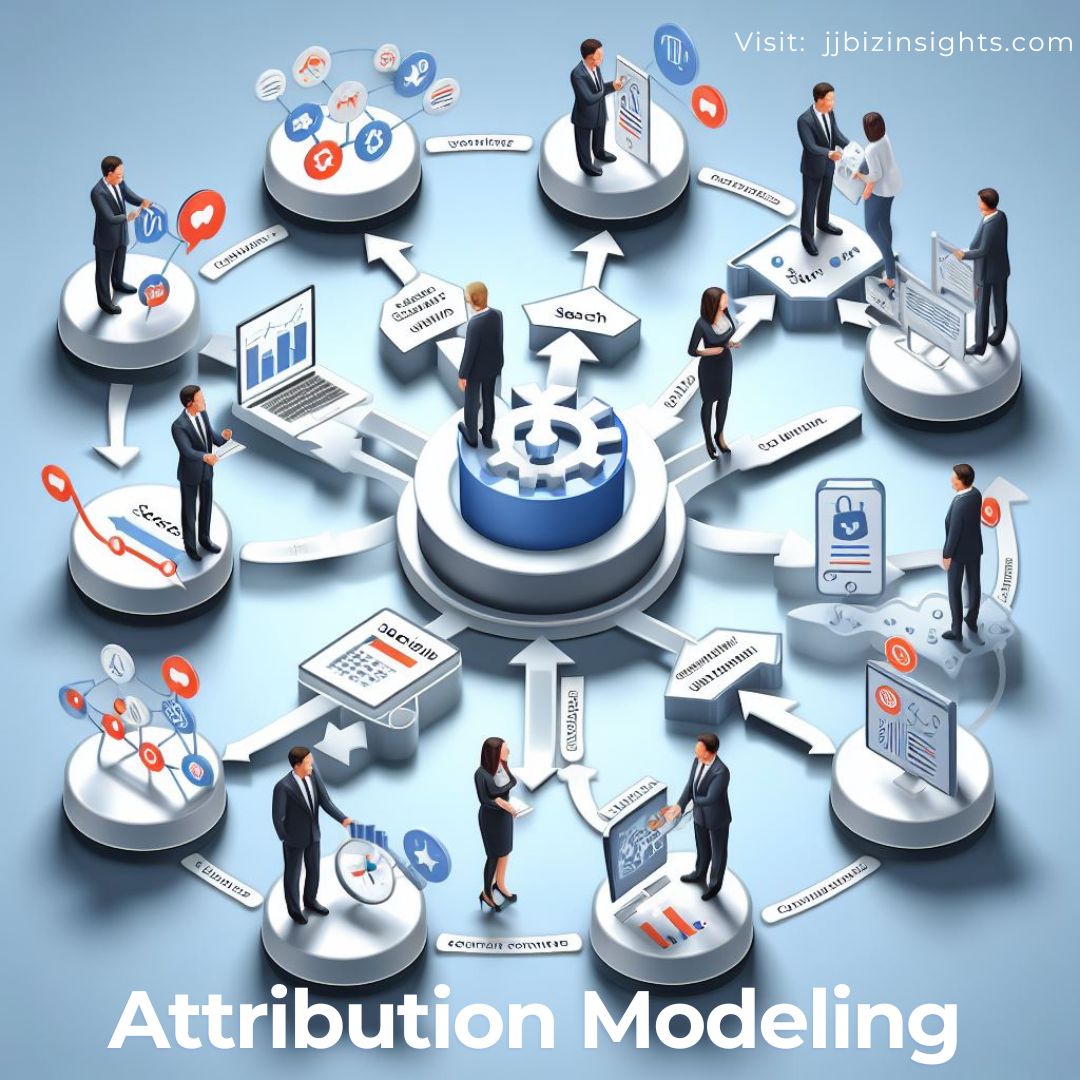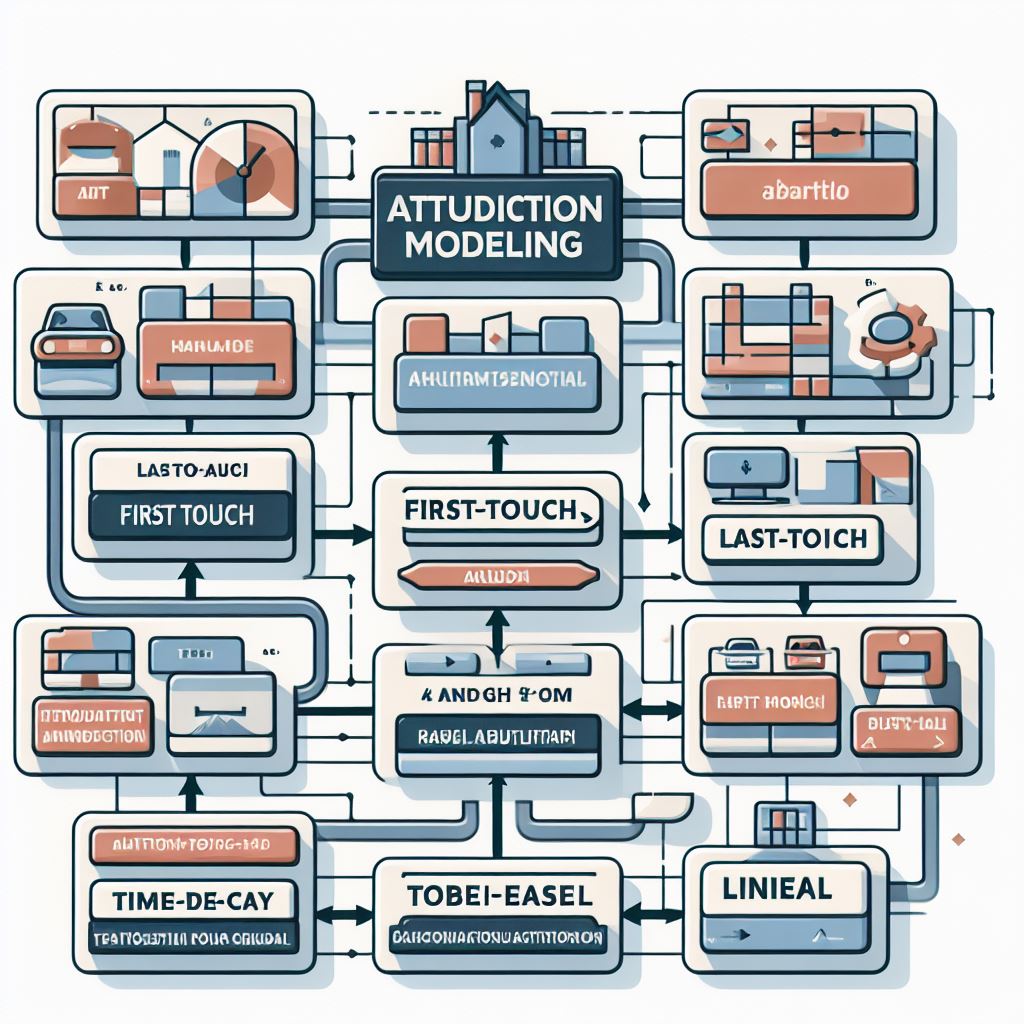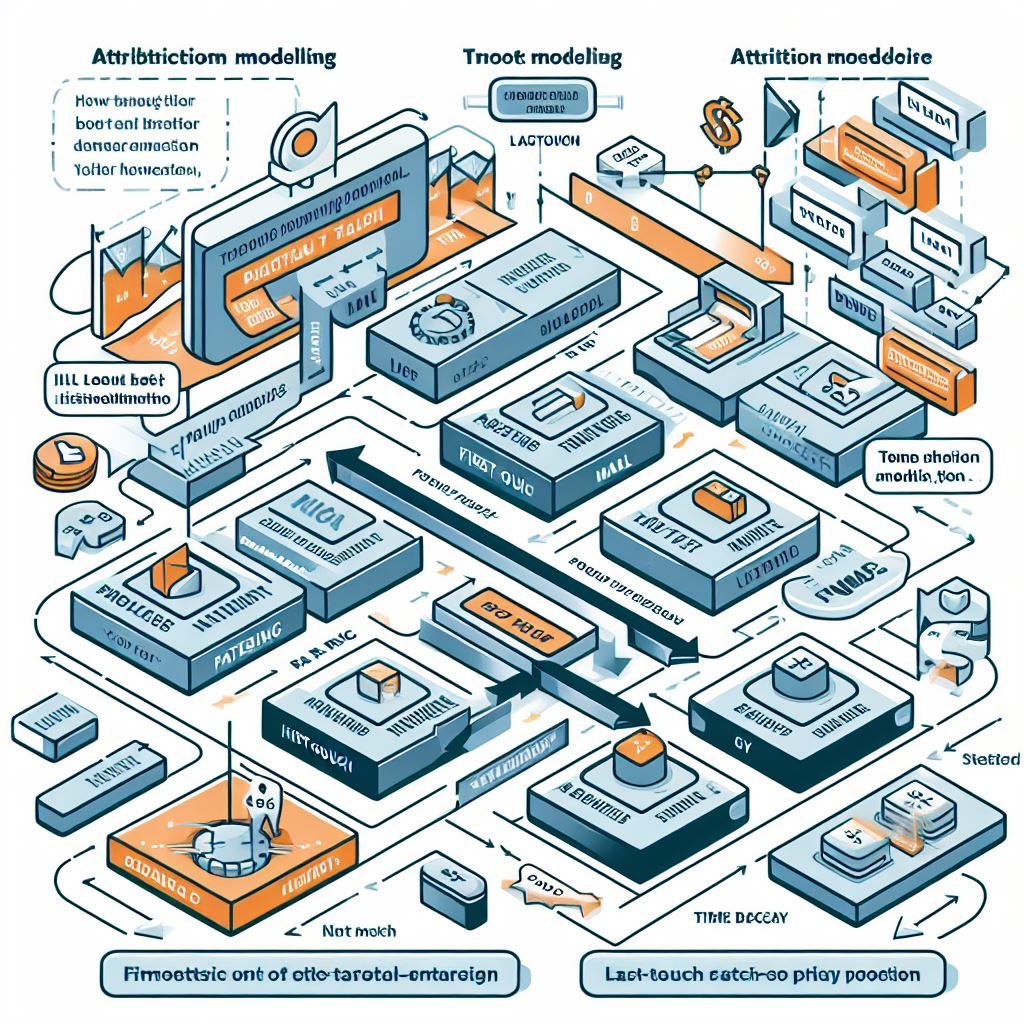
Attribution Modeling: Understanding Its Importance and Types
As a marketer, you’re well aware of the multitude of channels and touchpoints through which prospects and customers interact with your brand during their buyer’s journey. These channels include PPC, your website, email campaigns, social media, and more. Attribution modeling helps you analyze and assign credit to these marketing efforts, allowing you to understand their impact and optimize your strategies.
What Is Attribution Modeling?

Attribution modeling is the process of determining how much credit to assign to different marketing channels or touchpoints in the customer journey for a particular sale or conversion. By attributing value to each channel, you gain insights into their effectiveness and allocate marketing resources more efficiently.
Why Is Attribution Modeling Important?
- Identifying Areas for Improvement: Attribution modeling helps you pinpoint specific stages of the buyer’s journey that can be optimized. By understanding which touchpoints contribute most to conversions, you can enhance those areas.
- ROI Determination: Assigning credit to channels and touchpoints allows you to calculate the return on investment (ROI) for each one. This knowledge informs budget allocation decisions.
- Effective Budget Allocation: Attribution modeling reveals the most impactful ways to spend your marketing budget. You can allocate resources where they yield the best results.
- Personalized Campaigns: Tailoring your marketing campaigns and content to unique personas becomes easier when you know which touchpoints resonate with specific audiences.
Types of Attribution Models
- Multi-Touch Attribution Modeling:
- Considers every channel and touchpoint a customer interacts with throughout their journey.
- Provides insights into the most influential channels and how they work together.
- Powerful for understanding the holistic impact of marketing efforts.
- Cross-Channel Attribution Modeling:
- Similar to multi-touch attribution but focuses on assigning value to marketing channels (e.g., paid, organic, social media).
- Doesn’t delve into specific touchpoints within those channels.
- Linear Attribution Modeling:
- Gives equal credit to all channels and touchpoints.
- Useful for a balanced view of the entire journey.
- First-Touch Attribution Modeling:
- Attributes the conversion entirely to the first channel or touchpoint the customer interacted with.
- Highlights initial touchpoint impact.
- Last-Touch Attribution Modeling:
- Opposite of first-touch attribution.
- Credits the last touchpoint before conversion.
- Useful for understanding closing interactions.
- Time-Decay Attribution Modeling:
- Assigns more credit to touchpoints closer to conversion.
- Reflects the diminishing influence of earlier interactions.
Conclusion
In summary, attribution modeling empowers marketers to make data-driven decisions, optimize campaigns, and allocate resources effectively. Consider your business goals and audience when choosing an attribution model. Remember, there’s no one-size-fits-all approach; the right model depends on your specific context.
How to Implement Attribution Modeling in my business?

Implementing attribution modeling in your business involves several steps. Let’s break it down:
- Define Your Goals and Metrics:
- Start by identifying your business goals. What do you want to achieve? Is it increased sales, lead generation, or brand awareness?
- Next, determine the key performance indicators (KPIs) that align with your goals. These could include conversion rate, revenue per channel, or customer lifetime value.
- Collect Data:
- Gather data on customer interactions across various touchpoints. This includes channels like social media, email, paid ads, organic search, and direct visits.
- Use tools like Google Analytics, CRM systems, and marketing automation platforms to track user behavior.
- Choose an Attribution Model:
- Select an attribution model that suits your business context. Common models include:
- Multi-Touch Attribution: Considers all touchpoints in the customer journey.
- Last-Touch Attribution: Attributes the conversion to the last touchpoint.
- First-Touch Attribution: Credits the initial touchpoint.
- Linear Attribution: Gives equal credit to all touchpoints.
- Time-Decay Attribution: Assigns more weight to recent interactions.
- Consider your business type, industry, and customer behavior when choosing a model.
- Select an attribution model that suits your business context. Common models include:
- Implement Tracking Tags and UTM Parameters:
- Use tracking tags (UTM parameters) to label your marketing campaigns. These tags allow you to trace user interactions back to specific channels.
- Ensure consistency in tagging across all channels.
- Analyze Data and Calculate Attribution:
- Use your chosen attribution model to calculate the contribution of each touchpoint to conversions.
- Tools like attribution software or custom scripts can help automate this process.
- Visualize Attribution Insights:
- Create visual reports or dashboards to understand how different channels impact conversions.
- Look for patterns and trends. Are certain channels consistently driving more conversions?
- Optimize Marketing Strategies:
- Armed with attribution insights, adjust your marketing strategies:
- Allocate budget based on channel effectiveness.
- Optimize underperforming channels.
- Test different messaging and creatives across touchpoints.
- Armed with attribution insights, adjust your marketing strategies:
- Iterate and Refine:
- Attribution modeling is an ongoing process. Continuously monitor and refine your approach.
- Be open to adjusting your model as your business evolves.
Remember that attribution modeling isn’t a one-size-fits-all solution. Tailor it to your specific business needs and adapt as necessary. Good luck with implementing attribution modeling in your business! 📈
What are some Best Practices for Attribution Modeling?

When it comes to attribution modeling, there are several best practices that can help you make informed decisions and optimize your marketing strategies. Let’s dive into them:
- Use Multiple Models:
- Relying on a single attribution model may not provide a complete picture. Different models emphasize various touchpoints differently. Consider using a combination of models (e.g., first-touch, last-touch, linear, or time-decay) to gain a holistic view of your customer journey.
- Test Different Models:
- Don’t settle for one model without experimentation. Test various attribution models to see which aligns best with your business goals and customer behavior.
- A/B testing can help you compare the effectiveness of different models in driving conversions.
- Combine Data Sources:
- Leverage data from various sources, including web analytics, CRM systems, and marketing automation platforms.
- Combining online and offline data provides a more accurate representation of the customer journey and helps attribute conversions effectively.
- Ensure Accurate Tracking and Consistency:
- Make sure your tracking and data collection methods are accurate and consistent across all channels.
- Inaccurate data can lead to flawed attribution results. Regularly audit and validate your tracking mechanisms.
- Optimize Continuously:
- Regularly review your attribution data to identify patterns and trends in your marketing performance.
- Use these insights to optimize your campaigns, adjust your marketing mix, and allocate resources more effectively.
- Consider Cross-Device Attribution:
- Customers interact with brands across multiple devices (e.g., mobile, desktop, tablet). Implement cross-device attribution to account for this complexity.
- Tools that connect user interactions across platforms help attribute conversions accurately.
- Involve Stakeholders and Align Teams:
- Collaborate with sales, marketing, and data teams. Ensure everyone understands the attribution process and its impact.
- Alignment between marketing and sales data is crucial for accurate attribution.
Remember that attribution modeling is an ongoing process. Stay agile, adapt to changes, and refine your approach based on real-world results. 📊
Some Common Attribution Pitfalls?
When it comes to marketing attribution, there are several common pitfalls that marketers should be aware of. Let’s explore these challenges and how to overcome them:
- Double Attribution:
- Issue: When multiple media sources claim credit for the same install, marketers can end up paying for an acquisition more than once.
- Solution: Work with a mobile measurement partner (MMP) that provides last-click attribution. This ensures that only the network responsible for the last click receives payment, avoiding double charges.
- Comparing Downloads with Installs:
- Issue: Downloads and installs are not the same. A download occurs when a user clicks to download an app, while an install requires the user to actually open the app.
- Solution: When analyzing data, compare installs with installs to avoid confusion and ensure accurate reporting.
- Measuring Facebook Campaigns Correctly:
- Issue: There are two ways to measure Facebook campaigns: embedding Facebook’s SDK or using official MMPs. Using other methods may result in missing vital information.
- Solution: Use Facebook’s SDK or a reliable third-party MMP to measure campaign performance effectively.
- Cross-Device and Cross-Browser Journeys:
- Challenge: Tracking customer journeys across different devices and browsers can be tricky, leading to discrepancies in attribution results.
- Solution: Invest in tools that allow for cross-device tracking and consider using unified identifiers to connect user interactions across platforms.
- Long Sales Cycles:
- Challenge: Some sales cycles are lengthy, making it difficult to attribute conversions accurately.
- Solution: Extend your attribution window to account for longer sales cycles and consider multi-touch attribution models that capture interactions over time.
- Lack of Proper Tools and Applications:
- Challenge: Without the right tools, marketers struggle to collect and analyze attribution data effectively.
- Solution: Invest in robust attribution platforms, analytics tools, and customer journey mapping solutions to improve accuracy.
- The Rise of the Cookieless World:
- Challenge: As browsers phase out third-party cookies, traditional tracking methods become less reliable.
- Solution: Explore alternative tracking methods such as first-party cookies, server-side tracking, and contextual targeting.
Remember that successful attribution requires a strategic mindset, accurate data collection, and the right tools. By addressing these challenges, marketers can improve their attribution practices and make informed decisions. 📊
Worldwide – Pick from 100K+ items to enjoy 100%OFF-APP New Users Only
What are Customer Data Platforms (CDP)?
Customer Journey Analytics: The Roadmap to Customer Centricity





